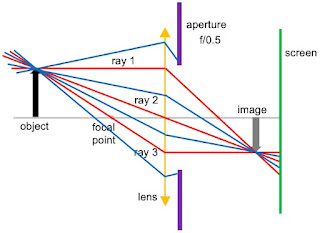 |
| If I Understood You, Would I Have This Look on My Face? by Alan Alda. |
You run a company and you think you are relating to your customers and employees, and that they understand what you’re saying, but they don’t, and both customers and employees are leaving you. You’re a scientist who can’t get funded because the people with the money just can’t figure out what you’re telling them. You’re a doctor who reacts to a needy patient with annoyance; or you love someone who finds you annoying, because they just don’t get what you’re trying to say.The first half of the book describes a variety of improvisation techniques that teach how to increase your empathy and your ability connect to others; almost how to read someone’s mind. Alda believes that empathy is the key to communicating: “relating is everything.”
But it doesn’t have to be that way.
For the last twenty years, I’ve been trying to understand why communicating seems so hard—especially when we’re trying to communicate something weighty and complicated. I started with how scientists explain their work to the public: I helped found the Center for Communicating Science at Stony Brook University in New York, and we’ve spread what we learned to universities and medical schools across the country and overseas.
But as we helped scientists be clear to the rest of us, I realized we were teaching something so fundamental to communication that it affects not just how scientists communicate, but the way all of us relate to one another.
We were developing empathy and the ability to be aware of what was happening in the mind of another person.
While I find these ideas interesting, improvisation isn’t something I have any experience with and, frankly, have little interest in trying. After all, most of these methods require interpreting facial expressions and body language. What could any of this have to do with the solitary process of writing a blog post?
Then I reached Chapter 15: “Reading the Mind of the Reader.” It starts
I know it sounds odd, but we’ve found that it’s possible to have an inkling of what’s going on in the mind of our audience even when they’re not actually in the room with us—like when we write.I wish this chapter had been longer. Alda stresses the importance of writing from the reader’s perspective
In his elegant book The Sense of Style, Steven Pinker says that to write as if the reader were looking over your shoulder is probably to not possible. It’s just too difficult to take on the perspective of another person.He then describes Steven Strogatz’s success in writing about mathematics, and how he “engages the reader as a friend.” Readers of my blog might be familiar with Strogatz, whose work I have discussed before (here, here, here, and here). Alda concludes this chapter about writing with
I wonder...
My guess is that even in writing, respecting the other person’s experience gives us our best shot at being clear and vivid, and our best shot, if not at being loved, at least at being understood.Another technique to improve a scientist’s writing is to tell stories. The secret is to first introduce the main character and their goal. For a scientist, this may be to test a hypothesis. Then, crucially, comes some obstacle that puts everything in suspense. Finally, some turning point arises and the story resolves. Alda claims that a story is engaging because you get “caught up in someone's struggle to achieve something.”
If we’re looking for a way to bring emotion to someone, a story is the perfect vehicle. We can’t resist stories. We crave them.I’m going to try to incorporate more empathy and story-telling into these blog posts. An even greater challenge will be to use these techniques in a textbook like Intermediate Physics for Medicine and Biology as we prepare the 6th edition. My years of experience teaching undergraduates based on IPMB should help. I’ll do my best.
I’ll let Alda have the last word.
So, it’s really not that complicated: If your read my face, you’ll see if I understand you. Improv games, and even exercises on your own, can bring you in touch with the inner life of another person—even when you sit by yourself and write.
Alan Alda on If I Understood You, Would I Have This Look on My Face?
https://www.youtube.com/watch?v=y8xPr6fJRMs
Alan Alda on why communication is so important to science.


















